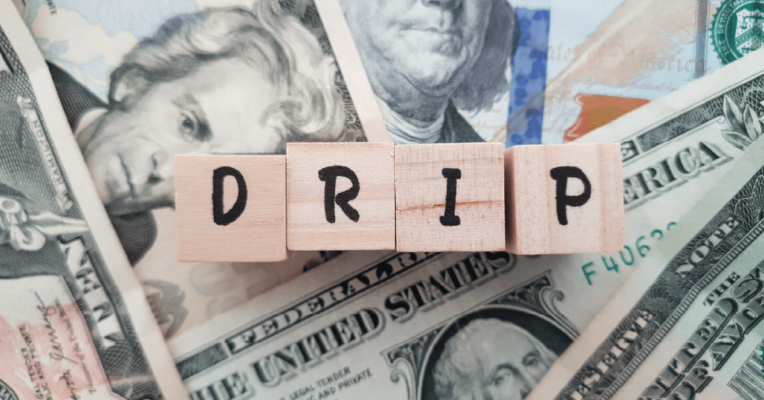How Safe Harbor Tax Rules Impact Your Estimated Tax Payments
You may be charged a penalty if you don’t pay enough tax through withholding and estimated tax payments throughout the year. However, you may avoid that penalty by adhering to the safe harbor rules.
When the federal income tax was initially passed into law, the code was approximately 27 pages long. Today, the portion of the U.S. Tax Code that covers income taxes, the Internal Revenue Code, is over 6,800 pages. Many rules pertain to the federal income tax on the taxable income of U.S. citizens and residents. One of those rules is that individuals must pay 90% of taxes as they earn or receive income during the year (not when their income tax return is due), either through withholding, estimated tax payments, or a combination of the two.
Withholding the appropriate amount from regularly paid income is a relatively routine and familiar process for most. However, there are guidelines you should be aware of when it comes to handling the tax payments for unique events like:
- significant capital gains
- lump-sum distributions (ex: the sale of a business, equity compensation, stock option exercise, large commission payments)
- or other sudden windfalls or unanticipated income from which no taxes are withheld
- self-employment income
Before we jump into the specifics, it’s important to note that you’ll end up paying roughly the same tax liability regardless of when you make the payments (which can be by paying before you file the return via estimated payment or when you file your return). Identifying the ideal approach for your unique situation allows you hold on to your money longer while also ensuring you don’t incur unnecessary penalties or interest.
What is the safe harbor tax rule?
In general, a “safe harbor” is a provision that protects from penalties when certain conditions are met. When it comes to the estimated payment of taxes, you may owe the penalty for underpayment unless you adhere to these “safe harbor” provisions outlined by the IRS:
- if it turns out you owe less than $1,000 in tax for the current year after subtracting your withholdings and credits
- if you pay at least 90% of the tax obligation for the current year
- if you pay an amount equal to 100% (if your adjusted gross income for the year is over $150,000 then you’ll need to pay 110%) of your taxes for the prior year
Most states follow the federal safe harbor rules, though some have other specific conditions. For instance, in New York, the safe harbor rule applies if you expect to owe less than $300 of N.Y. State, $300 of N.Y. City, and $300 of Yonkers income tax after tax withheld and credits that you are entitled to claim.
How to calculate your estimated tax payment
The best way to determine how much you might owe for estimated payment is to use Form 1040-ES, Estimated Tax for Individuals. It contains an Estimated Tax Worksheet with rate schedules and instructions.
The IRS also recommends using your previous year’s tax returns as a guide, so you’ll want to have that handy. To calculate your estimated tax, you must determine your expected adjusted gross income, taxable income, taxes, deductions, and credits for the year. Once filled out, the form’s worksheet will indicate your quarterly estimated tax. The IRS collects estimated income taxes with quarterly payments on specific published due dates, which they include along with a payment voucher in the 1040-ES.
Beware – if your W2 income has increased during the current year, and the taxes from withholding have risen, you may already be on track to pay a sufficient amount during the year (i.e., 100% or 110% of your taxes for the prior year).
How RSUs factor into quarterly tax payments
A common fact pattern that we see with RSU income is that the default tax withholdings are lower than what the taxpayer should ultimately be paying since the IRS has set standard withholding rates that employers must pay on behalf of the employee. This rate is 22% (or 37% once one’s income crosses over $1 million), so if someone’s actual tax liability on the RSU income is higher, the employee could be in store for a surprise tax bill come filing time.
For taxpayers whose income jumps dramatically compared to the previous year, we’ll often calculate and make their estimated payments to reach safe harbor based on 110% of the previous year’s tax liability, which will be much lower than the current year’s tax liability. This allows you to avoid interest and penalties and earn some return on funds earmarked for tax payments in the short term.
Here’s an oversimplified example. Let’s say your income went from $150k in the previous year to $900k in the current year after your employer goes through a liquidity event, such as undergoing an acquisition or an IPO. As a single filer, your federal tax liability on $150k of income would have been around $38k in the previous year. In the current year, where your total income increases to $900k, your federal estimated tax liability would be $320k. The key is to pay 110% of $38k, totaling $41k, through payroll deductions and estimated payments. The remaining $280k of tax you will owe on your $900k of total income is due on the April 15 tax deadline. As the dollar amounts get larger, the benefit of holding onto this extra cash throughout the year becomes more meaningful.
This strategy works for individuals whose income continues to increase on a year-over-year basis. If income levels out, the fact pattern above tends to break down, and you’ll often revert to using 90% of the current year’s tax liability to make sure you’re safe from underpayment interest and penalties. It can be helpful to consult with a tax professional to verify that you abide by IRS guidelines and calculate the correct payment amount.
What is the penalty for underpayment of estimated taxes?
What if you don’t meet the safe harbor tax provisions nor pay enough tax throughout the year? In that case, you may have to pay the penalty for underpayment of the estimated tax. Under the Internal Revenue Code, the rate of interest is determined quarterly. For taxpayers other than corporations, the underpayment rate is the federal short-term rate plus three percentage points. The federal short-term rate is specified in the first month of each calendar quarter and published by the IRS. As prevailing interest rates move higher, the IRS rates will also increase. For example, in the fourth quarter of 2022, the annual rate for interest accrual was around 6%. This rate would be assessed as an unpaid tax liability for the length of time that it was unpaid.
Strategic considerations for paying taxes immediately vs. meeting the safe harbor conditions and paying them in full later
Imagine you’ve sold your business for $10 million, triggering a significant long-term capital gain. Should you pay the entire federal and state tax liability now out of the proceeds of the deal? Or should you wait until your tax returns are calculated at year-end to determine and pay your tax liability? These questions often arise when dealing with unique events, and working with professionals experienced in navigating these waters, like our Tax Advisory team, can be a tremendous benefit. Particularly if there are considerations such as cash-flow constraints or if you’d like to put that capital to productive use until your final taxes are due.
The U.S. Tax Code is lengthy and complex, but knowing how to take full advantage of the safe harbor tax rules if you experience a unique event can save you from potential penalties while allowing you to proactively plan to achieve your goals successfully. Contact us to learn more about our tax advisory services.






